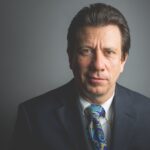Intangible Assets: Hidden Financial Strengths in Naturopathic Institutions
FRASER SMITH, MATD, ND
This month’s title may sound like a direct-to-video action film that one might find on the far right of a row in a Netflix scroll. However, intangible assets are an important notation in accounting, and the concept behind it means something for our colleges. Like a family with bills to pay, kids to clothe and feed, and endless repairs, it would seem that our naturopathic colleges will always have to pay close attention to the institutional budget. It might seem to an outsider that any small university or college these days is just a few tuition dollars ahead of the grim reaper of insolvency. The reality of the situation is more complicated than this, as our colleges tend to own things, such as valuable land and structures, and to have savings. The work done by the presidents of our colleges and their administrative and faculty colleagues is amazing, a dexterous tack into headwinds that always keeps the naturopathic educational network moving forward.
There’s no doubt that it’s a tough time for higher education. The value of credentialing is more carefully considered by students than before, it seems, and with good reason. The cost of education, to those who provide it and those who pursue it, continues to rise, and for many students, the cost vs benefit of student debt demands a thorough analysis.
A naturopathic college must provide a safe, functioning campus with maintenance and security workers. It must constantly maintain a highly skilled (and sometimes very nuanced or rarely skilled) core and adjunct group of faculty. In clinical education, there is a very low student/faculty ratio that requires resources. And there must always be support staff who do things like set up payroll, maintain the finances of the institution, provide student service and financial aid counseling, and much more. No matter how efficient a school may be, these expenses always add up astonishingly quickly.
On the happy side of the ledger, there are assets such as property, and cash in a bank account. These can be used to pay bills or sold to acquire funds to do so. But what kind of “intangibles” are there? Are they tiny transactions on a blockchain ledger, or some kind of asset that only a chosen few can see and hold? And, in addition to that primary mission of providing excellence in education to our students, do these intangible assets help the institution with the bottom line?
Relationships
Like any enterprise, the relationships created by naturopathic colleges are of value to the institution. Some of these relationships lead to collaboration between institutions, businesses, and individual scholar-practitioner-researcher. Other relationships can lead to advocacy when legislative and regulatory issues are being negotiated. The sharing of information and advice can be helpful. Any college president, dean, or faculty member knows peers at other institutions who not only can commiserate, but can also share their insights and strategies for addressing challenges. These relationships improve the human strengths of the organization. They can lead to opportunities that might cost less and pay more dividends than to go it entirely alone. They can help the organization avoid costly pitfalls. So, while not directly evident on an itemized list of “revenue,” relationships help the organization succeed.
Intellectual Resources
This is often referred to as “intellectual capital” – a useful term for economists, but too commodified an image of colleagues for this academician. Secundo et al reviewed the literature on intangible assets and intellectual capital (IC) relative to nonprofit organizations and higher education, specifically.1 They suggest that “The identification and measurement of intangible assets can help evaluate the alignment between strategic orientation and performance.” In an interesting model, they divide IC into 3 axes: human, organizational, and relational capital.1 As an example, on the human side, there are the principles of efficiency and attractiveness. Efficiency relates to output versus investment (eg, “Did the high-powered researchers you hired lead to more grant acquisition?”) Attractiveness pertaining to student recruitment asks, “Do these IC resources draw students to the institution because they want to study with certain people or have certain opportunities?” Secundo et al make a good argument that both financial aspects and overall fulfillment of mission and objectives can be more closely related to intangibles.
Intellectual Property
This might seem like a minor item when we compare our colleges to large universities that have rights to patents for molecular testing, drug treatments, etc. No doubt the intellectual resources of our colleges are rich, and, as institutions, we punch well above our weight category. Some of our faculty are authors, and some of our colleges have academic publishing enterprises, or “Presses.” These are green shoots of what can become a more concerted effort to stake out the domain of the naturopathic body of knowledge. Publishing for a smaller profession in a very saturated market of medicine, diet, and wellness books is not always the most lucrative undertaking. But naturopathic medical faculty have created some incredibly high-quality learning resources. Two of my colleagues, Drs Sue Darby and Gregory Cramer, have a 3rd-edition neuroanatomy textbook with Elsevier – Clinical Anatomy of the Spine, Spinal Cord, and ANS2 – that is second to none. We see definitive works in our field, such as Naturopathic and Integrative Pediatrics, by Dr Leslie Solomonian (CCNM Press).3
There are other possibilities too. In disciplines such as psychology, occupational therapy, pain management, and more, there are assessment scales and questionnaires that are well-validated instruments for diagnosis. These require a development process, but there is no reason that one of our schools couldn’t produce something like this relative to micronutrient status, inflammatory reactions to toxins, etc.
Brand
There are many ways to describe the concept of a brand. Investopedia states the following:
A brand is an identifying symbol, mark, logo, name, word, and/or sentence that companies use to distinguish their product from others. A combination of one or more of those elements can be utilized to create a brand identity. Legal protection given to a brand name is called a trademark.4
Brand is a peculiar concept when it comes to naturopathic medical education. Any service or product that places itself in a marketplace has a brand. A very common example for brand identity is Apple products. The consumers know that this entails quality and innovation, a good experience for the user, and also a certain type of kinship with fellow users (not limited to calls on FaceTime!).
In the academic and health sciences/medical world, it has to be more than brand. Most companies would also feel that their product delivers more than the brand identity. However, for us, our mission is to have an authentic, truth-seeking core of individuals who create the body of knowledge and translate it into practice. There are ethical considerations in medicine, and a type of relationship with patients that extends beyond a business transaction, even if those considerations are inextricably bound up with providing patient care. In other words, we are not just a shell of an “image” to position something; we are an actual community of researchers, practitioners, scholars, teachers, and students who are creating something of value for the world.
That brand for a naturopathic medical college, which naturally arises out of this mission and these values, is a powerful thing. It has a naturally compelling narrative that should be told effectively; but it is not spin, not mere rhetoric.
That brand can lead to greater financial security in vital ways. Prospective students are likely to be more inclined toward a school that exudes a strong purpose and success in fulfilling it. The same can be said for prospective students’ perception of the profession as a whole. In some ways, if a future student already had a mental image and some particular emotions evoked by a certain naturopathic medical college, fewer funds and less forcefulness may be needed in the marketing to that student. It’s still true, in 2021, that some students just know in their bones that they are meant to be a naturopathic doctor. However, we cannot count on that, and we ought not to deprive other excellent future naturopathic physicians the opportunity to discover this pathway.
That brand can also attract patients to our clinical centers, where our interns train. It might support the progress of a grant application for research, in the consideration of that grant money doing good in a supportive and proven institution.
Goodwill
Goodwill is an attitude, a disposition of trust and willingness to engage. Businesses create goodwill by providing the products and services they promise in a way that meets customers’ expectations (such as timeliness, quality, etc). When they fall short, they make it right, which can be an opportunity to create even more goodwill (who hasn’t enjoyed that complimentary dessert at a restaurant that brought the soup out cold?) Many businesses pay careful attention to Yelp, Google, and more specialized reviews, and sometimes answer them, always never as a public rebuttal.
Our goodwill comes from students being satisfied, and even more so, inspired and well educated. Students who work hard for their successes, but can see how much their education helped them, have goodwill towards their alma mater. They refer other prospective students. They mention their training with pride, even reverence, when they are doing a public talk, or just chatting with patients.
Goodwill can come from patients who were helped by our clinics. They may have made a full recovery or they may have found relief and improvement. Maybe they were comforted and listened to with a sincere desire on the part of intern and faculty to understand their story. This is an enormous source of good and returned good. It happens every day in ever-expanding orbits around our teaching centers. Every time in 2020 that our interns and faculty put on their PPE and saw a patient, or squeezed a patient into their telemedicine schedule, it created more gratitude and goodwill.
Our colleges’ employed staff and faculty factor into goodwill as well. They are ambassadors of the colleges and can continue to be, even if they seek opportunities in new fields. Sometimes these lead to friends in much larger, research-oriented universities. Or it can be in government or politics. Unhappy faculty and staff can ding their former employer on sites such as Glassdoor, or on social media. It’s impossible to please everyone, but a healthy culture in a community of learners just helps the enterprise that much more.
Building our Intangibles
These are some examples of intangible assets. They can’t be cashed like a check and don’t show up in a Venmo account. You can’t pay the bills with them. And yet, they are synergists for success. Over time, they are really necessary for long-term success.
Here is a question for those of us in naturopathic medical education: Can we do the things that develop these assets even more, and can we use them (and not abuse them) to more effectively help our colleges thrive?
The answer is both simple and – if you are anywhere near a naturopathic college – challenging. Like that family we used as an example at the beginning of this article, some days it seems like getting dinner ready or fixing the faucet is the urgent and important thing that crowds out all else. But these not-always-urgent but vitally important intangible assets deserve their due consideration and energy. In spite of the taxonomies and classification systems for these qualities of our institutions, no reductionistic approach will capture all of their importance. To paraphrase the singer-songwriter Marshall Crenshaw, someday, someway, we’ll understand exactly how any of these strengths helped us.5 But there is no doubt that they are helping, and we should seek to further develop them.
References:
- Secundo G, Margherita A, Elia G, Passiante G. Intangible assets in higher education and research: mission, performance or both? Journal of Intellectual Capital. 2010;11(2):140-157. Available at: https://doi.org/10.1108/14691931011039651. Accessed April 20, 2021.
- Cramer GD, Darby SA. Clinical Anatomy of the Spine, Spinal Cord, and ANS. 3rd edition. St Louis, MO: Mosby Publishing; 2013.
- Leslie Solomonian, ND. Available at: http://lesliesolomonian.weebly.com/book.html. Accessed April 20, 2021.
- Kenton W. Brand. Investopedia. Available at: https://www.investopedia.com/terms/b/brand.asp. Accessed April 20, 2021.
- Lyrics.com. Someday, Someway: Marshall Crenshaw. Available at: https://www.lyrics.com/lyric/772158/Marshall+Crenshaw/Someday%2C+Someway. Accessed April 20, 2021.

Fraser Smith, MATD, ND is Assistant Dean of Naturopathic Medicine and Professor at the National University of Health Sciences (NUHS) in Lombard, IL. Prior to working at NUHS, he served as Dean of Naturopathic Medicine at the Canadian College of Naturopathic Medicine (CCNM) in Toronto, Ontario. Dr. Smith is a licensed naturopathic physician and graduate of CCNM.









